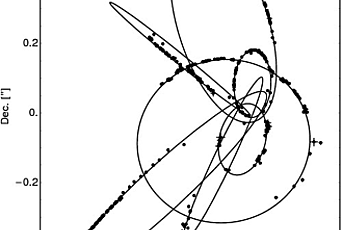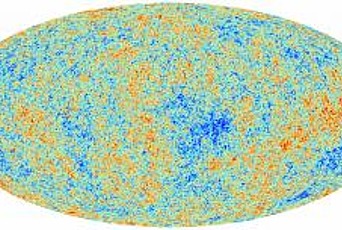James M. Stone, Computational Astrophysicist, Joins Faculty of the Institute for Advanced Study
Press Contact

James M. Stone, a world-renowned computational astrophysicist, whose research is focused on fluid dynamics—in particular numerical solutions to the equations of magnetohydrodynamics (MHD) in an astrophysical context—has been appointed to the Faculty of the School of Natural Sciences at the Institute for Advanced Study, effective July 1, 2019.
“Jim is an innovator and problem solver, whose novel numerical algorithms have shaped the field of computational astrophysics and contributed greatly to our understanding of the universe,” stated Robbert Dijkgraaf, IAS Director and Leon Levy Professor. “He will be a wonderful addition to the Institute’s astrophysics program. With a broad research scope and a commitment to mentorship, Jim’s position at the IAS will facilitate wide dispersal and application of knowledge, providing insight into longstanding questions concerning a variety of cosmic systems. With this appointment, the Institute also reaffirms the increasing importance of the computational approach to research.”
Stone is currently the Lyman Spitzer, Jr. Professor of Astrophysical Sciences and Professor of Applied and Computational Mathematics at Princeton University as well as the Chair of the University’s Department of Astrophysical Sciences. His research interests include star formation, accretion flows, interstellar gas dynamics, and the development of numerical algorithms for MHD and radiation hydrodynamics.
“Jim is the preeminent authority in numerical astrophysics. He has developed methods to address some of the most challenging problems in the field and through his work has ushered in a new era of precision simulations with a wide range of applications,” stated Matias Zaldarriaga, Professor in the IAS School of Natural Sciences. “His field-spanning work combines a deep knowledge of the physics involved with cutting-edge mathematics and computational science achieving unrivaled success.”
Stone is a world leader in MHD in large part because he is equally influential in code development and in applying his codes to important astrophysical problems. The public codes ZEUS-2D, released in 1992 by Stone and Michael Norman, and Athena, released in 2008 by Stone and his collaborators, are among the most powerful and widely used astrophysical codes.
“I am thrilled to be joining the faculty at the IAS. The opportunity to focus full-time on research, and to collaborate with the members and other faculty, is what makes the IAS so special,” stated Stone. “It gives me the chance to think about the big problems that are hard to work on at other places.”
Stone’s work has provided groundbreaking insight into the nature of giant molecular clouds, using 3D simulations to provide the first realistic high-resolution models of these dense, massive systems that give rise to the majority of star formation in galaxies. Stone has also elucidated many of the physical processes that determine the evolution of the accretion disks that power quasars, micro-quasars, and accreting neutron stars. With his students, he has explored numerical models of the spiral waves and shocks created by planets orbiting in protoplanetary disks and the critical but poorly understood process of planetary migration in the disk. Furthermore, Stone has made many contributions to the difficult subject of radiation transport, including the first numerical studies of the effects of radiation fields on accretion disks and of line-driven disk winds, and the first global models of radiation-dominated disks.
Stone earned a B.Sc. and M.Sc. from Queen’s University in Canada (1984 and 1986) and a Ph.D. from the University of Illinois (1990). He was named a Fellow of the American Physical Society (2013) and received the organization’s Aneesur Rahman Prize for Computational Physics (2011), and the Dirk Brouwer Career Award from the American Astronomical Society (2019).
During his academic career, Stone has held academic positions at the Princeton University, the University of Cambridge, and the University of Maryland. He is also member of the American Astronomical Association, the American Physical Society, and the International Astronomical Union.


